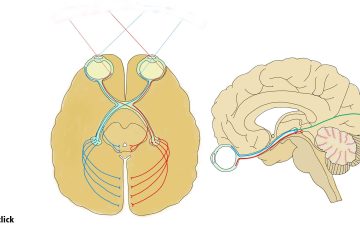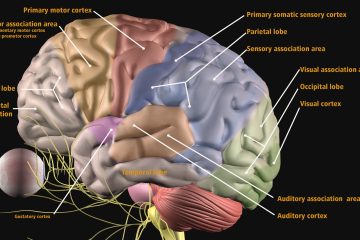Balance Awareness Week serves to educate and inform the public about the challenges associated with vestibular and balance disorders. These conditions can profoundly impact an individual’s quality of life, leading to debilitating symptoms such as dizziness, instability, and disorientation. Many individuals suffering from these disorders experience significant emotional and physical impairments that can result in isolation and frustration. By shining a spotlight on these issues, Balance Awareness Week aims to foster understanding and empathy in society, while also encouraging those affected to seek the help they need.
Clinicians who specialize in diagnosing and treating vestibular and balance disorders play a pivotal role in enhancing the quality of life for their patients. Their knowledge and skills in differentiating the underlying mechanisms of these disorders are paramount in developing effective treatment plans. Comprehensive assessments that include evaluations of musculoskeletal functional abilities are critical, as they help identify the specific factors contributing to balance issues. This holistic approach not only aids in accurate diagnosis but also informs targeted interventions that can improve stability, mobility, and overall functionality.
Moreover, the collaboration between healthcare professionals, patients, and support networks is crucial during Balance Awareness Week. By sharing educational resources and personal experiences, communities can cultivate an environment of support, reducing the stigma associated with balance disorders. Empowering patients with knowledge about their conditions enables them to take an active role in their care, fostering resilience and promoting a sense of agency over their well-being. As awareness continues to grow, so too does the potential for improved treatment outcomes and a deeper understanding of the complexities surrounding vestibular and balance disorders.
Special Tests to Help Identify Potential Musculoskeletal Limitations for Poor Balance
Learn Functional Tests for Musculoskeletal Function for Balance Awareness Week
Part of the overall exam includes a musculoskeletal examination. We can certainly do our standard gross manual muscle test of the upper and lower extremities. Still, I will probably spend more time looking at functional tests to see what I need to do with my patient. I can have somebody who tests 5 out of 5 in sitting, hip flexion, and knee extension, but they cannot get out of the chair without using their arms. So some of the tests that we’ll talk about are going to be much better I think for looking at the musculoskeletal system.
Balance Awareness Week Prep – Back Scratch Test
When we look at the upper extremity extensibility, the Back Scratch Test is a great test for flexibility and can guide us in our treatment. With that test, individuals should be able to get their middle fingers together. If they cannot, we will look to see how far apart they are. If they overlap, it’s a plus; if they’re apart, it’s a minus. The norms will be broken out by male and female, and they’re every 5 years from 60 to 94. So this is a nice wide age range. They’ve really studied individuals throughout the older adult lifespan. When we look at the norms, not everybody will always get their middle fingers together, but there is a range that is considered normal. We can then use that to compare whether our patients are normal. Is this something I want to continue to work on, or is there a functional problem that they’re having that I need to work on?
Health-Related Physical Fitness as a Risk Factor for Falls in Elderly People Living in the Community: A Prospective Study in China
https://pubmed.ncbi.nlm.nih.gov/35910877/
Modified Total Rotation Test
The Modified Total Body Rotation Test is an excellent way to examine the total rotation of the cervical, thoracic, and lumbar spines. If the patient has significant problems with pain or other low back function or other problems within the spine, we may need to measure segmentally, but for many of my patients, there’s not a specific problem in the spine. So, I’m looking to see how much rotation they have. We need rotation to get in and out of bed. We need rotation when we’re walking. We need rotation to reach for objects, so rotation is essential. Again, some norms are broken out from 65 to greater than 85. The average score for all groups is basically 24 inches, 23.8 inches. Then it is broken down by age group, so we expect that as individuals age, it may be slightly less than somebody who’s maybe 65.
Absolute Reliability and Concurrent Validity of the Modified Goniometric Platform for Measuring Trunk Rotation in the Sitting Position. Applied Sciences
https://doi.org/10.3390/app12178891
Want to Learn How to Perform Specific Evaluation Tests to Identify Balance Deficits for Balance Awareness Week?

For a comprehensive evaluation and treatment approach for vestibular and balance disorders, go to https://www.healthclick.com/physical-therapy-continuing-education.php and utilize the resources provided in the Balance and Falls Series of comprehensive courses within the All-Access Healthclick Subscription. Some of the courses in this series are:
Balance and Falls in the Elderly Population
Evidence-Based Outcome Tools for Treating Balance Dysfunction
Vestibular Rehabilitation – Evaluation and Treatment
References
- Masharawi, Y.; Haj, A.; Weisman, A. Lumbar axial rotation kinematics in an upright sitting and with forward bending positions in men with nonspecific chronic low back pain. Spine 2020, 45, 244–251.
- Gao, J.; Thung, J.S.; Wei, S.; Pavlů, D.; Chee, C.S.; Ramasamy, Y.; Mohd Ali, A.S.B.; Mat Yatim, R.B. Absolute Reliability and Concurrent Validity of the Modified Goniometric Platform for Measuring Trunk Rotation in the Sitting Position. Appl. Sci. 2022, 12, 8891. https://doi.org/10.3390/app12178891
- Paraskevopoulos E, Kottaridis F-M, Moutzouri M, Koumantakis GA, Antonakis-Karamintzas D, Tsolakis C, Koulouvaris P, Christakou A, Papandreou M. Preliminary Insights into the Diagnostic Accuracy of the Modified Arm Care Screen Test for Overhead Athletes: An On-Field Tool for Injury Prevention. Healthcare. 2023; 11(23):3046. https://doi.org/10.3390/healthcare11233046
- Related Physical Fitness as a Risk Factor for Falls in Elderly People Living in the Community: A Prospective Study in China. Front Public Health. 2022 Jul 13;10:874993. doi: 10.3389/fpubh.2022.874993. PMID: 35910877; PMCID: PMC9326063.


